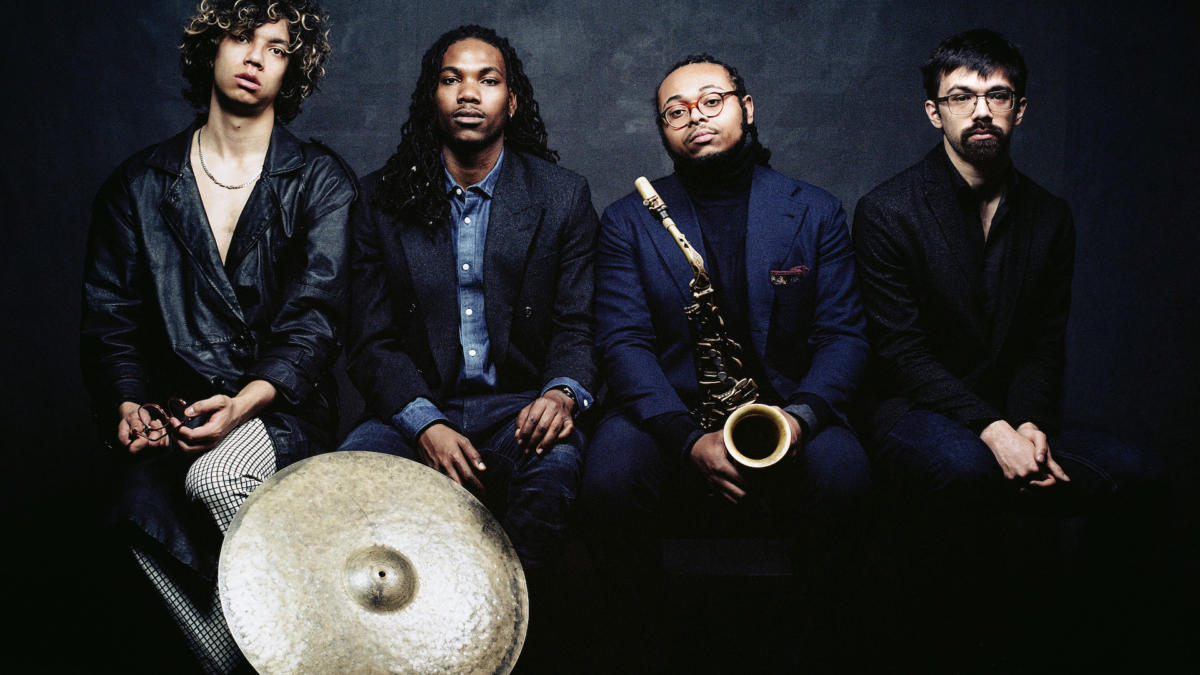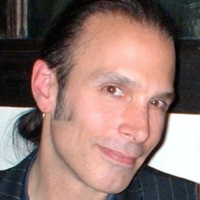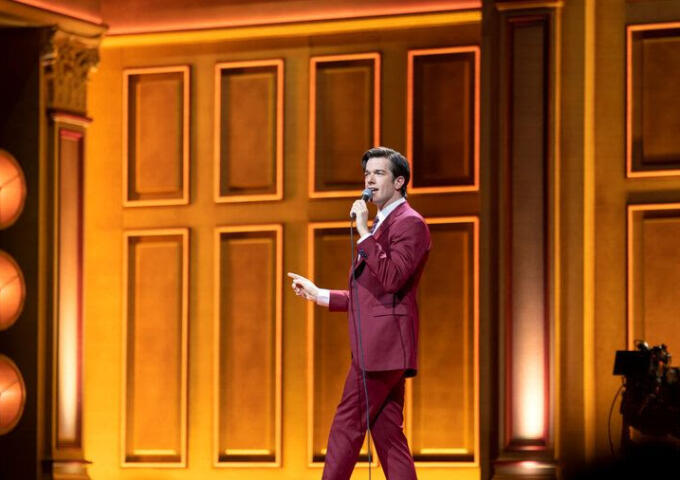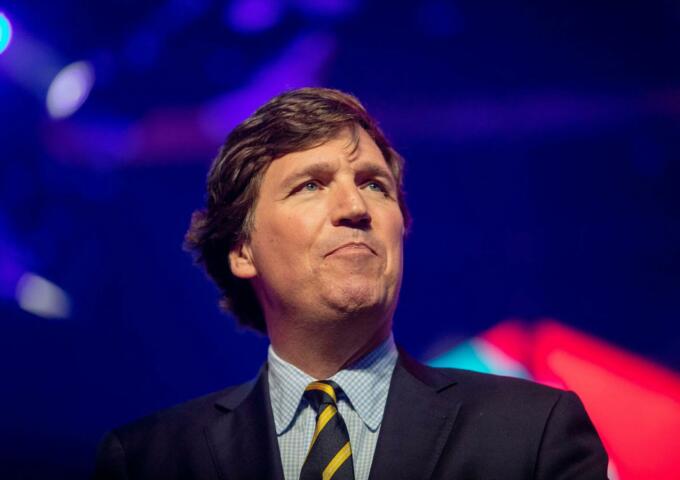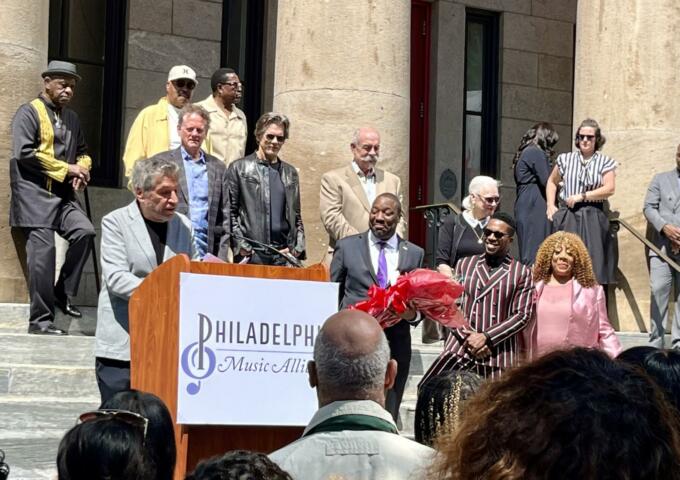Philadelphia jazz pianist, keyboardist and composer Orrin Evans is a touring monster if ever there was.
With his solo shows, gigs he has with bands he leads such as Captain Black Big Band and Tarbaby, and his membership in The Bad Plus – told me a story about getting stuck in Chicago, while on tour, when everything began to fall apart, pandemic style.
But first, a lesson.
“I like to not think of this as falling apart,” said Evans while at home in Mt. Airy. “When something falls all apart, 90 percent of the time, it’s difficult to put back together. It’s like dominoes – pick them up, they fall, you get frustrated, you set them back up again. I’m thinking more positively that everything hasn’t fallen apart, but rather come to an elongated pause.”
So, right at the top of this elongated pause in March, Evans and his trio were in Chicago after having just released a Captain Black album, when C-19 struck and ruined live, staged jazz music.
“I was playing at the Green Mill in Chicago with my trio, and was supposed to hook up with The Bad Plus for shows after that,” he said. “On March 11, I did a record with Wallace Roney and Buster Williams that is coming out on my label (Imani) shortly. On the 12th we did that Green Mill show, took the next flight out of Chicago, the 13th, and that was it. We lost Wallace (Philadelphia jazz trumpeter died March 31) later that month. A weird month.”
An awful month, elongated pause or not, and a not-so-great season around it. The local jazz scene was still mourning the passing of WRTI host Jeff Duperon when Philly saxophonists Bootsie Barnes and Danny Ray Thompson died this spring, as did locally-born bassists Henry Grimes and Jymie Merritt. Around this same time, the long-dilapidating John Coltrane House on N. 33rd Street was put on the “Pennsylvania at Risk” housing list, national historic landmark or not. To add insult to injury, Coltrane’s Strawberry Mansion mega-mural, at 29th and Diamond streets, would soon find itself in the shadow of a developer’s freshly constructed property – this after the first Coltrane mural at Diamond and Douglas Streets, was demolished in 2014 by a after being created in 2002.
“I would go to the Coltrane House and there would be gigs outside the house, jam sessions,” recalled young Upper Darby saxophonist Immanuel Wilkins, a proud Coltrane acolyte. “I’ve had flashbacks about playing outside that house… memories. It’s hard to believe something so historic and holy has been left to deteriorate.”
There is the news that legendary South Philly-born guitarist Pat Martino – he of the bluesy jazz tone on solo albums and gigs with the likes of Jimmy Smith and Joey DeFrancesco – is sick, on oxygen and too weak to undergo a lung transplant. Martino needed money for medical assistance; this after an aneurysm in 1980 left him with amnesia and no recollection of his career or how to play the guitar. At that time, he was forced to learn how to play the guitar from ground zero to where he was of late, playing marvelously menacing and complex solos, only to be felled again by a compromised immune system from that debilitating brain aneurysm.
Beyond the closures of COVID-19, this being jazz, and this being Philly, finding and keeping places to play America’s homegrown classical music is a mess. Jazz clubs are closed and, with the C-disease still in circulation, musicians continue to face the risk of illness and economic hardship. Same as it ever was.
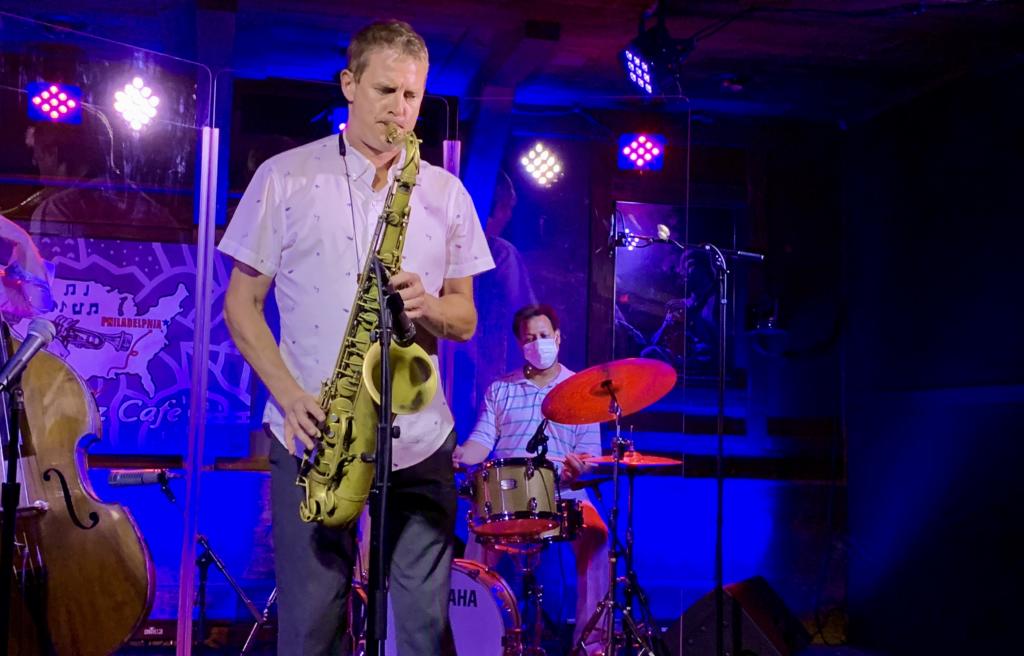
“I wouldn’t say all the problems with the Philly jazz community come down to a lack of money, but financial hardship is a big factor,” said Suzanne Cloud, the co-creator of Jazz Bridge, and now, the project director of the Philadelphia Jazz Legacy Project. “Playing jazz professionally is, and has been historically, a vow of poverty for most musicians.”
All that, and yet there are positive solutions to such negative problems.
Along with local lions such as Orrin Evans and Anthony Tidd creating viral live-streaming jazz showcases such as, respectively, Club Porch and ACT4Music – to say nothing of the now-virtual Jazz Philadelphia Summit, online Oct. 9-10 – the venerable Chris Jazz Café has become the first music club in town to stage live shows with no audience (starting with Pat Martino benefits last week), and create in-house live streams with the potential to make money for artist and club alike.
There’s the fact that Joseph L. Lewis III, a one-time Philadelphia Tribune reporter, will become the new executive director for the musician-founded aid society Jazz Bridge in August, and is looking to dive in head first. To top it all off, the first new jazz signing from Philly on a major label – Universal’s Blue Note – in a minute happens in August as incendiary alto saxophonist and composer Immanuel Wilkins releases his narrative and racially charged debut album, “Omega.”
Maybe, this was an elongated pause after all.
“The way I look at it, ‘jazz’ is a lineage,” said bassist-composer Anthony Tidd. He’s not only talking about the line between nu-jazz masters he’s gigged with (Steve Coleman, Greg Osby), and jamming hip hop acts (e.g. The Roots). Tidd too is discussing ACT4Music, his cloud-based gig portal, created pre-pandemic, as a “virtual venue” that he can tend and curate like a gardener does his flowers, one where Philly jazz-bos can experiment, and one where Tidd can offer creative musicians an online festival setting for curated-from-home video-music performances. “This is the future I’m trying to create, a platform that leans toward the creative side and allows artists to be supported by audiences.”
Support from an audience – even if Philly sometimes lags behind when it comes to showing love to its native sound – is just the sort-of music that makes Orrin Evans’ ears prick up.
The always-innovative and deeply soulful musician and jazz scene leader spent the first weeks of COVID-19 quarantine building up Patreon pages for recording purposes for The Bad Plus, Captain Black Big Band and Tarbaby (“In the old days of classical music, those composers weren’t on the road, gigging – they had patrons”) and producing other artists for his Imani label, when he got a real itch he needed to scratch. “I haven’t been home for this long in over 20 years … It was the first day of the George Floyd riots, a weird day, listening to what was going outside. To my friend staying with my family for quarantine, I said, ‘WE NEED TO JUST PLAY.’ So we decided to just go onto the patio and play. I just put my phone up and recorded that; dumb as far as audio and video quality. But, I did it. People on the block enjoyed it. It was then and there that I started thinking forward: a desire to do SOMETHING, something for us, something for the neighborhood.”
Something for jazz.
Club Patio was born, an every Sunday event running through August (probably the rest of autumn too) you can tune into, donate, and catch the most progressive cats in jazz (mostly NYC, see below) such as Johnathan Blake (Aug. 23) and Ari Hoenig (Aug. 30) jam with Evans on a large porch in Mt. Airy. And now with better lights, sound and cameras (SLIFE Productions) and without the Evans family grill in the shot.
“I want to play, but where can I do that where everyone feels comfortable,” asked Evans. “Many live streams make people feel uncomfortable with too many people in a studio, huddled too closely together without masks… you couldn’t enjoy the music, watching, wandering ‘is this safe?’ That’s why we’re outside on the patio. Everyone feels safer. People watch in a different way.”
“I wouldn’t say all the problems with the Philly jazz community come down to a lack of money, but financial hardship is a big factor. “Playing jazz professionally is, and has been historically, a vow of poverty for most musicians.”
– Suzanne Cloud, the co-creator of Jazz Bridge, and project director of the Philadelphia Jazz Legacy Project
That Evans has principal support from the Pittsburgh Jazz Festival in producing Club Patio (along with donations from people like you) says something about Philly that Evans has long discussed. See, the donations were plentiful in the spring, but, now that summer is here, donations are down, and it is PJF cash that makes sure Evans gets his sound crew paid, and gets food for musicians, as well as a few dollars.
“Philly has been quiet to a lot of this,” said Evans frankly. “I appreciate your call and J. Michael Harrison from WRTI invited me on-air, but, most of my support has come from Pittsburgh and New York as far as corporate money and artists who are willing to play here. Not trying to sound bitter, but it amazes me that I can still be one of the touring artists still on the scene that still live here – me, Jamaaladeen Tacuma, Gerald Veasley. We’re still here. I’m still here creating opportunities where you can see major jazz artists ON MY PATIO. Philly has not been the one to call or say, what can we do? Where am I getting support? PITTSBURGH.”
Finding the positive in the negative, fans have been great at sending Evans and his fam hand sanitizer and water (“I have as much free water now in my kitchen as I did at the beginning of COVID-19”). And while live streaming can’t be a cure to physical touring and gig-playing (“geo-limiting is an answer”), Evans is certain that the likes of Club Patio “are a great alternative – WHAT WE CAN DO RIGHT NOW.”
Mark DeNinno, the chef-owner of Sansom Street’s Chris Jazz Café, also wasn’t about to let COVID-19 kick his ass or that of the music. No sooner than the restaurant-venue’s downtime hit, DeNinno ripped out bathrooms (re-doing them with touchless faucets and soap dispensers) and carpets (replacing with hardwoods), and working on an A/V studio for live streams and sound-video recording that is now the heart of Chris.
“We actually started thinking about live streaming in January as a marketing-branding tool since most of our shows this season and last were sell-outs,” said DeNinno. “When March hit, everything shut down, and we knew we wouldn’t be going back to in-house dining service soon, me and Sean Svadlenak (Chris’ lead engineer) upped our game in the live streaming department, making it so that we can sell it, turn it into a revenue stream.” By June, DeNinno, Svadlenak and Co. spent $25,000 in equipment (cameras, lights, sound, drum kits) and another $25K in labor, not only to create a state-of-the-art studio for streaming, but for recording, and for engineering master classes. “Even WRTI, who can’t go back to their studios due to its being on Temple’s campus, are looking at us as an alternative,” stated DeNinno. “We’re keeping our options open as to how we best utilize and maximize this space.”
After last week’s Martino benefit broadcasts, this weekend’s first paid shows – Aug. 14 with vibraphonist Tony Miceli, his trio, and vocalist Joanna Pascale, Aug. 15’s tribute to “West Side Story” with pianist Tim Brey and vocalist Chelsea Reed, on stage but with no audience in the club – is Chris’ next phase in live streaming. The virtual shows will cost viewers five bucks, with bands getting their usual fees/pay and clubs getting streaming dollars/tix sales and ownership of the stream’s intellectual property. “We’ll keep it this price through September, then see where we’re at. Maybe do subscription packages, $20 a month, $100 a year, archive shows. We’ll be happy as clams doing 500 shows a year, live and on-stage, when the city says it’s safe – even keep the live streaming going then for people who can’t get here. We had a lot of viewers from other countries outside the U.S. for the Martino shows. For now, the livestreaming is a happy alternative.”
Alternative is a great word for how Jazz Philadelphia – a local nonprofit dedicated to advancing the development of, and gaining deserved recognition for, the city’s jazz scene, past and present – is looking to its future, a virtual one starting with its annual Jazz Philadelphia Summit. “The Summit will necessarily be online this year, Oct. 9 and 10, but we’re excited to present thought leaders in jazz and beyond, such as Terri Lynn Carrington, who is our first confirmed Keynote,” said Gerald Veasley, Jazz Philadelphia’s president and a bassist-composer of worldly renown. “This is a resilient, creative community, and they will not be held back by anything. Not COVID, not the shutdown, not the civil unrest. We’re moving forward.”
To Veasley’s full house, Heather Blakeslee, Jazz Philadelphia’s executive director, throws a forward-looking straight, mentioning how, as a still-new organization just over 2 years old, they’re working on program designs for initiatives that will include, “a jazz musician co-op, a jazz education database, an ongoing series of intergenerational jazz jams, and an exciting media partnership with WRTI called Hometown Heroes, where we’re going to celebrate a wide range of musicians who have been shaped by Philadelphia as a city.… We want to provide our jazz players and advocates with the support they need to have sustainable careers here in Philadelphia, and to thrive as players, entrepreneurs, and community leaders. Philadelphia needs to keep investing in our arts community. It’s part of what makes a city a city.”
Making a city a city is great, and doing virtual live streaming jazz on the regular is a bonus. To Suzanne Cloud, though, she’ll always go for the meat and marrow. “I wish both Chris’ Cafe and Anthony Tidd’s site well with the livestreams because it puts money in the pockets of musicians, but it just ain’t the same as a live performance.”
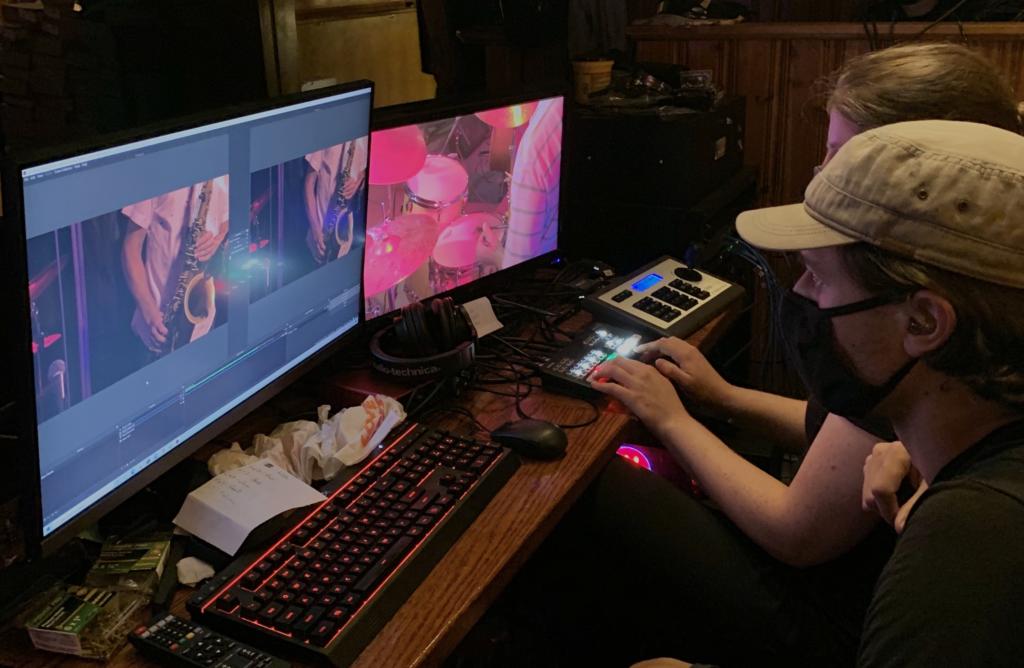
Cloud, the vocalist and educator-turned-activist and advocate with 2004’s co-creation of Jazz Bridge – an organization dedicated to supporting local jazz and blues musicians and vocalists in crisis – has been intimate with the stage, forever, and up-close and personal with the flesh-and-blood people who work it. And since departing Jazz Bridge, Cloud has been the director of the Philadelphia Jazz Legacy Project, an archival initiative geared toward preserving and making jazz Philly great again. Or, at the very least, gathering its totems and tchotchkes in one place for historical curation. If anyone knows the problems and solutions to Philly jazz’s woes, it’s her.
“There’s always strength to be found during dark times, and I have faith in my brothers and sisters in the arts, in jazz – this is the time where we get our inspiration, our creative energy.
– Saxophonist Immanuel Wilkins of the Immanuel Wilkins Trio
The lack of money, beyond jazz being a license to ill and ail, largely comes down to the Office of Arts, Culture, and the Creative Economy which promoted and paid for summer concerts in the parks, promoting jazz-related arts like photography and portraiture, and celebrating Jazz Month every April, has been dismantled by Mayor Kenney. “The mayor used COVID-19 as an excuse to disband the office and cut almost every cent of arts funding. What an incredibly stupid move from someone who doesn’t understand the importance of the arts in times of financial struggle – see Franklin Delano Roosevelt’s WPA as an example of how to do it right – and the blow to the jazz community is substantial.”
The Coltrane House and the mural? Cloud agrees with Mural Arts’ boss Jane Golden in that murals aren’t necessarily meant to stand forever because a city changes, deconstructs and reconstitutes itself on a daily basis. “I applaud the builders who have offered $25,000 for a new mural somewhere else,” said Cloud of a solution that came from the new developers whose upcoming property will shadow the saxophonist’s giant mural.
“The John Coltrane House is a wholly different situation, a historic place, run for years by Cousin Mary (Lyerly Alexander, Coltrane’s closest Philly relative, the subject of one of his most renowned songs, and the neighbor-caretaker of the Coltrane House until she passed in 2019 at the age of 92), being left to the ravages of time because the family that owns it now doesn’t understand that in order to get public funds to rehabilitate the house, one must agree to some restrictions on the use of the house.”
Cloud has had discussions with Paul Steinke, executive director of the Preservation Alliance of Greater Philadelphia, and with Faye Anderson, director of All that Philly Jazz, a project dealing with preserving African American public history, “It’s been a real mess,” said Cloud. “We’ve all been stymied as to what to do. I have written to Mayor Kenney about possibly the city buying the house from the family and then rehabilitation can proceed. Never heard back from him. Devastating to realize all the memories of what that house has been to the jazz community just being let go to rubble.”
As a working jazz musician most of her adult life, Cloud has heard about problems such as the Coltrane House. She’s heard Philly jazz stories after all her gigs – from mentors, older fans, fellow musicians – thinking that maybe one day she’d get the chance to help collect and curate those stories that seemed to disappear in the night air after the music was over. She got that chance, with a discovery grant from the Pew Center of Arts & Heritage three years ago to work with archivist Jack McCarthy and form an energetic advisory committee to explore the possibility of a local jazz archive: the Philadelphia Jazz Legacy Project.
“We’ve definitely hit some bumps, but, we’re still surveying the memorabilia people have in their personal collections, filming life histories of our elder jazz musicians (like saxophonist Bootsie Barnes, who recently died of COVID), accepting donations from the families of jazz musicians that will be stored at the Blockson Collection at Temple, and encouraging the entire community to help us build this archive,” she said. With that, Cloud recalls an old George Orwell quote: “‘He who controls the past controls the future.’ With an archive, future musicians and fans have the historical context to celebrate and understand their past, present, and envision a future, where they’ll stand on the shoulders of the giants who came before them.”
As many of those local giants have had their struggles with health and finance, Cloud and Wendy Simon started Jazz Bridge in 2004. After Cloud left Jazz Bridge in 2018, its new executive director, Jeff Duperon, died within the year, as did drummer Jim Miller, who was an integral part of the organization.
“The board has been dealing with resuscitating the organization after those two big blows, but under the capable eye of interim director Kim Tucker, it looks like things are looking up,” noted Cloud. “They need to finish a project I started with David Dubinsky: ‘The Philadelphia Real Book’ of local jazz compositions with Temple University Press. Jazz Bridge’s board owes it to Philly musicians to publish the book. My advice to the new exec director? Maintain the core mission – immediate help for jazz musicians in crisis. It’s needed now more than ever.”
“Everything in Philly jazz comes back to Coltrane. Everything in jazz, period, comes back to Coltrane.”
Jazz Bridge’s Program Director Kim Tucker speaks for herself and incoming Executive Director Joseph L. Lewis III (who before leaving Pittsburgh for his new Philly residence was struck by the death of his mother, and unavailable for comment) when she preaches the goals, graces and the good grooves and deeds of the Philly jazz crisis intervention center. Her mother was one of the founding board members of the Bridge with Cloud and Simon, and Tucker has been part of the Bridge since 2007, as a board member, a president, as its interim director, and – for the last five years – its program director, managing Jazz Bridge neighborhood concerts and public relations.
“We need a proper executive director and Joseph (Lewis) can take us in the right direction,” said Tucker. Knowing well that City of Philly-financed jazz concerts are currently a moot point with park and block permits pulled for the summer’s pandemic, Tucker realizes that getting money from the city is a difficult task in which to “give musicians in crisis or not, an opportunity to perform and be paid a fair wage. Not knowing where and when money is coming to pay phone bills, buy new glasses, fix their instruments or make car payments is rough. That’s what Jazz Bridge did for them.”
As COVID-19 changed the game, canceling the remaining concerts in its outdoor series that netted Philly musicians in crises necessary cash, an odd and wonderful thing happened. “The Jazz Bridge board made the decision to present these musicians who were expecting payment for those canceled concerts with an honorarium – hit the phones, and got people to donate to our COVID fund so that musicians could buy groceries and make care payments. KleinLife from NorthEast Philly (a wellness and social services center) provided meals to many of our constituents. Everyone worked together… it’s beautiful.”
Along with the need to continue bountiful charity until Jazz Bridge concerts can re-start, Tucker knows that Jazz Bridge must pivot from its We have to move beyond live concerts going into 2021. “We must exist virtually, either pre-recorded shows or live streams, up-dating websites, have access to more grants and elevate our profile. That’s what Lewis will do – he’s a new excited voice who knows the community, has old and young friends in the Philly jazz scene. He’s focused on Jazz Bridge, wants to expand on that history, cultivate new donors and make new connections with city, state and private funding.… This doesn’t happen unless someone champions our cause.”
Oh, and Tucker worked with Coltrane’s Cousin Mary on backyard concerts of hers when Kim was a child. She’s been through the Coltrane House many times in her youth, and called it a “true museum. As a whole, the music community needs to get on board, find funding and do more to make its historic marker mean something and open its doors.”
Everything in Philly jazz comes back to Coltrane. Everything in jazz, period, comes back to Coltrane. No one knows that better or deeper than Immanuel Wilkins, the Upper Darby born-and-raised pianist-turned-alto saxophonist and composer whose debut album, “Omega” came out last Friday on Blue Note.
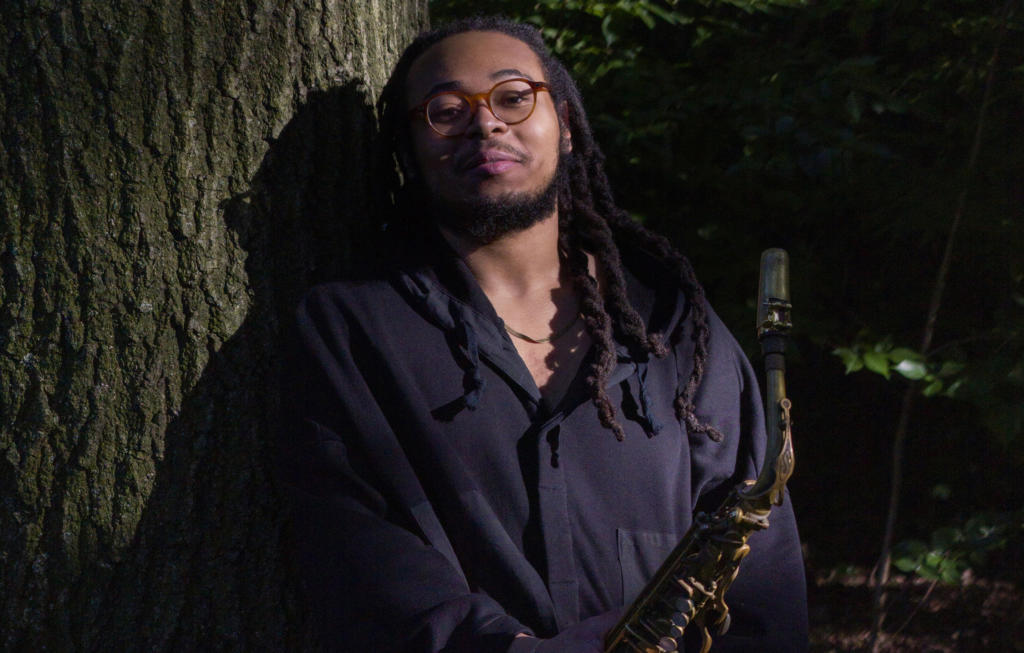
“That was my birthday,” said a jovial 22-year-old Wilkins, noting that the major label release of his debut was not intended as an early present. “It wasn’t by design. ‘Omega’ was supposed to come out Aug. 14 but Blue Note also had the new Bill Frisell release (“Valentine”) for that day. The label asked if they could move it up and that worked out so much better for me.”
Starting off as a pianist in the churches of Upper Darby such as Prayer Chapel Church of God in Christ (“known for great music and crazy great gospel musicians”), Wilkins shifted to sax and moved to New York City in 2015 to attend The Juilliard School, play gigs across NYC’s wide jazz net and befriend mentors such as trumpeter Ambrose Akinmusire and pianist Jason Moran. Not only did Wilkins play in Moran’s “In My Mind: Monk at Town Hall, 1959,” live showcase honoring Thelonious Monk, it was Moran who ushered the saxophonist’s debut to Blue Note.
“The album was actually finished in 2019, before we had a label deal,” said Wilkins. “Jason had a hand in so many Blue Note productions of late, and it was he who asked Don Was (the head of Blue Note) to see our show in Los Angeles. He loved us. When we finished the album it was Jason who reminded Don “Remember that show you loved. Here’s the album.“
Wilkins once told me, categorically, that he doesn’t associate himself with the word, ‘jazz,’ as much as he does the deed. “Like all black music, there’s a certain freedom about jazz. The music, the culture, the community of it, all drew me in. But, it was always there.” With that, Wilkins has been free to collaborate with a range of artists such as Solange Knowles, Gretchen Parlato, Wynton Marsalis and Joel Ross with whom Wilkins played on the vibraphonist’s 2019 Blue Note debut “KingMaker.”
Wilkins didn’t just fall from the sky is my point. What’s boldest and most lived in about “Omega,” beyond its buoyant nuanced blend of empowered pain (several “American Tradition” pieces) and unbridled joy and uplift (a celebratory “Warriors,” a lovely lush ballad “The Dreamer”) is that Wilkins’ debut is all his own, original compositions.
Was it always clear in his mind that Wilkins’ debut would be all his own compositions?
“I think so… that being said… maybe not. There are so many titles I love, we love,” he said of inspirations and favorites from Ornette Coleman, Benny Carter, Charlie Parker, Henry Threadgill and, of course, John Coltrane – more on him later.
“I believed in my own music, my own compositions, a lot. Then again I have always been as much a traditionalist as I am a modernist – I could have seen myself doing a mix of the two. Once it came time for me to put something together it was apparent that I needed to make a cohesive statement as to who I am, and what I am. I had enough music of my own. The right way to do it was to have it be all originals.”
That cohesive statement involves heated compositions such as “Mary Turner – An American Tradition” and “Ferguson – An American Tradition,” both tracks on the money, current and cutting what with the police murders of George Floyd, Breonna Taylor, and Ahmaud Arbery. These songs alone put Wilkins in the pantheon of jazz players and writers speaking to Black America about issues of race and injustice. Think Max Roach’s “We Insist!” or Archie SHepp’s “Attica Blues.” Wilkins too, like Coltrane did on “A Love Supreme,” and many other compositions, speaks to the spiritual, to the gods, on his own “Grace & Mercy.”
“The killing of Michael Brown in Ferguson… I wrote it based on the narrative of the aftermath working backwards to its initial shock,” said the saxophonist. “There’s a cymbal crash at the end of the song signifying the first shot. After the initial take, Moran came into the studio and said that we (Wilkins with pianist Micah Thomas, bassist Daryl Johns, and drummer Kweku Sumbry) had to figure out how to embody this character, this incident, create a narrative with imagery, and not just use a name. In general, the album – my entire arc – is based on ideas of blackness, black identity.
When I was thinking about Michael and Mary, I was thinking about how Black people in general live in this two-tiered reality .. super sublime and super hilarious material as well as the grotesque, the angry. Think Dave Chappelle, the blues, or Black Twitter. There is beauty and humor that comes out of the grotesque. Black people’s viewpoint – at all times – is through those two filters. I wanted to make an album that sounded like those two poles. … Intense beauty and intense horror at the same time. I want to be as explicit as possible.”
And while “Grace & Mercy” finds Wilkins introspectively writing about his time in church, in gospel tradition, to how blessed he is, “Omega,” peers into the prospect of what the end looks like, sonically. “What does the end of police brutality look like, what does the end of prejudice look like? What does the end of the pandemic look like – what I arrived at is that things get worse before they get better – I was trying to create a soundtrack for the end whatever that means.
That all this was and is fueled by Philly (friends and mentors on the scene such as Mickey Roker, Marshall Allen or Jamaaladeen Tacuma) and the personification of Philadelphia Black music and spirituality in John Coltrane is what makes Wilkins’ music warm and familial even when it’s at its most incendiary.
“The better part of my artistry stems from me being from Philly, from Upper Darby, from the church,” he said. “I will always be the first one to sing Philadelphia’s praises. A large part of that is Coltrane. I am his biggest fan. That is the spirit in which my music is rooted, THAT’S THE ONE, ingrained in me since the youngest of ages, played in jam sessions with friends where we hit “Impressions” or “Resolution” for like 40 minutes straight. The spirit of it, him, jazz, was always about reaching higher and going deeper within the music. That was always the goal. That’s the spirit of the record. That’s the spirit of Philly.”
With that, Immanuel Wilkins has faith that his city and its jazz scene can look past any ill wind and find fresh new air.
“The arts have always outrun any bad that is happening in history,” he said. “There’s always strength to be found during dark times, and I have faith in my brothers and sisters in the arts, in jazz – this is the time where we get our inspiration, our creative energy. We’re documentarians. Our job is to take note of what is going on and make something out of that. What until you hear what comes next.”
